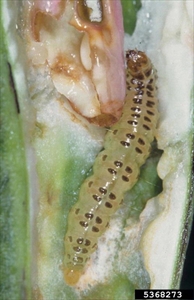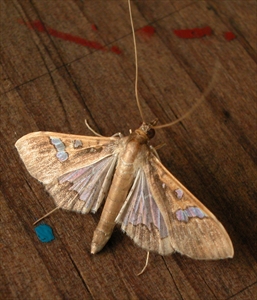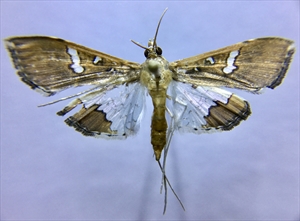- Worldwide distribution. In tropics. On bean, including French bean, cowpeas, pigeon peas and yard long beans. An important pest.
- Caterpillars have two rows of black dots on the back.
- At first, caterpillars feed in the flowers making webs, then bore into the pods to eat the seeds. Look for frass – waste matter – at entry holes.
- Cultural control: avoid planting near old crops; handpick flowers with webbing; grow maize/sorghum between bean rows; collect debris and destroy; check AVRDC for tolerant varieties.
- Chemical control: aim to kill caterpillars in flowers as difficult for chemicals to enter pods. PDPs: neem, derris, pyrethrum, or chilli; use spinosad or Bt (Bacillus thuringiensis). Alternatively, synthetic pyrethroids, but may kill natural enemies.







